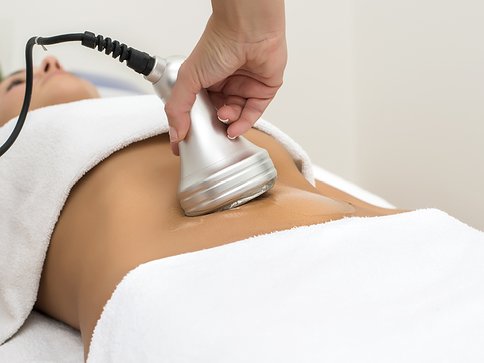Loose skin can occur for various reasons—aging, significant weight loss, pregnancy, or simply genetics. It tends to appear in areas like the abdomen, thighs, arms, and neck. While many focus on losing fat, loose skin is often left behind and becomes its aesthetic concern. People who shed excess weight quickly may find that their skin lacks the elasticity to snap back into place. This is where non-invasive treatments like Ultrasound Cavitation in Dubai come into the conversation. While the treatment is mainly known for its fat-reduction capabilities, many want to know if it can also help with tightening loose skin.
How Ultrasound Cavitation Works
Ultrasound cavitation involves sending low-frequency sound waves into the subcutaneous fat layer. These waves create vibrations that disrupt fat cell membranes, turning them into liquid, which the body naturally eliminates through the lymphatic system.
In addition to targeting fat, the ultrasonic energy can stimulate blood flow and mild thermal activity beneath the skin. This process may contribute to collagen production, which is crucial for maintaining skin firmness and elasticity.
Can It Actually Tighten Loose Skin?
Ultrasound cavitation can contribute to skin tightening, but it’s important to manage expectations. It is not a dedicated skin-tightening procedure. However, some users experience:
- A mild firming of the skin over time
- Better skin texture and tone
- Smoother surface appearance in treated areas
These benefits often result from increased blood circulation and collagen stimulation during the sessions. The effects are subtle and progressive, and results vary depending on the skin’s baseline elasticity and the individual’s health habits.
Who Will See the Best Skin Tightening Results?
This treatment is best for individuals with:
- Mild to moderate loose skin
- Recently lost weight and need minor tightening
- Good overall skin quality and elasticity
- Small to medium areas of concern (e.g., lower belly, arms, inner thighs)
- A consistent and healthy lifestyle
People with severe skin sagging or older individuals with significant collagen loss may not see dramatic tightening. In such cases, combining cavitation with other technologies like radiofrequency may be more effective.
What Areas Are Best for Skin Tightening Through Cavitation?
Certain areas of the body respond better to cavitation for both fat reduction and skin tightening:
- Lower abdomen (post-baby belly or post-weight loss)
- Upper arms (bat wings)
- Inner thighs
- Flanks and hips
- Jawline and lower face (if performed with precision and care)
These are typically the zones where skin is thinner and more responsive to stimulation.
What Does the Science Say?
While the main mechanism of cavitation is fat disruption, the secondary thermal effect can stimulate fibroblasts, the cells responsible for producing collagen and elastin. Though the tightening result is not as powerful as treatments like radiofrequency or laser therapy, mild improvements in firmness and texture are often observed with repeated sessions.
Consistent treatments (usually 6–12 sessions) offer the best chance of seeing visible improvement in the skin’s appearance.
How Does It Compare to Other Skin Tightening Methods?
Let’s briefly compare ultrasound cavitation with other popular skin tightening treatments:
- Radiofrequency (RF): Delivers stronger thermal energy and is more focused on tightening skin.
- Laser treatments: Penetrate deep layers of skin and often yield faster results.
- Microneedling with RF: Stimulates collagen at multiple depths with longer-lasting tightening.
- Ultrasound cavitation: Primarily for fat loss, with added mild tightening benefits.
For patients seeking both fat reduction and light skin tightening, ultrasound cavitation can be a great place to start. However, those focused solely on skin laxity may want to explore additional or alternative treatments.
Aftercare Tips to Improve Skin Tightening
To support skin tightening results from ultrasound cavitation, consider these aftercare practices:
- Stay hydrated: Water helps with lymphatic drainage and skin elasticity.
- Apply firming creams: Products with collagen, hyaluronic acid, or peptides may help.
- Eat skin-friendly foods: Incorporate vitamin C, zinc, and healthy fats into your diet.
- Exercise regularly: Improves circulation and supports collagen production.
- Avoid excessive sun exposure: Protects collagen levels and prevents further sagging.
Healthy habits enhance and prolong the benefits of cavitation.
Why It’s a Go-To Option in Dubai
In Dubai, where appearance and lifestyle go hand-in-hand, ultrasound cavitation is favored for its:
- Non-invasive and comfortable nature
- Minimal downtime
- Gradual yet noticeable body improvements
- Compatibility with fast-paced schedules
- Safe usage across various skin types
Residents looking for subtle reshaping and light firming often prefer cavitation to more intense or surgical procedures.
What to Expect From a Treatment Session
During a session, you’ll lie comfortably while a technician applies a gel to the treatment area and glides the ultrasonic handpiece over the skin. You might feel a slight warmth or hear a buzzing sound, but the procedure is painless.
Afterward, your skin may feel a little warm or tight, but this typically fades within hours. You can return to your normal activities immediately.
Conclusion: Is Ultrasound Cavitation a Skin Tightening Solution?
Ultrasound cavitation is primarily a fat reduction treatment, but it can offer modest skin tightening benefits as a bonus—especially for people with mild skin laxity and good collagen reserves. If your goal is to smooth and firm your body while trimming away small pockets of fat, this treatment may suit your needs. For deeper or more dramatic tightening, it may be best used in combination with other technologies or lifestyle changes





